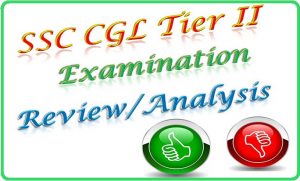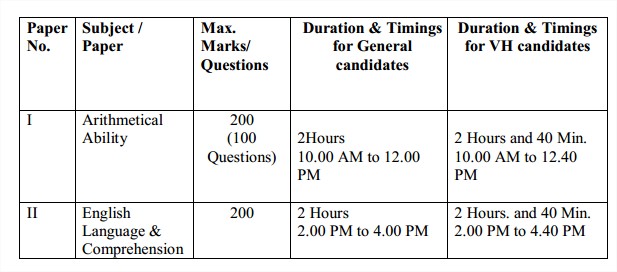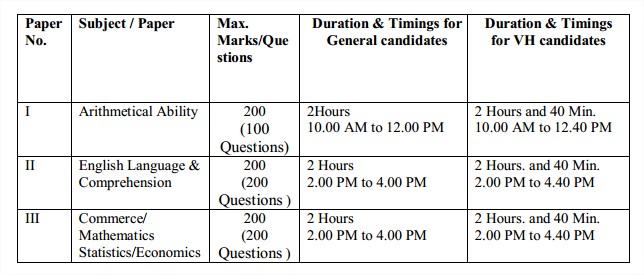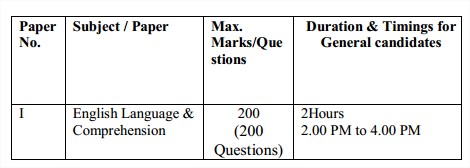
24 Jan SSC CGL Tier II Review Exam Analysis Expected Cut Off Marks
24 Jan SSC CGL Tier II Review Exam Analysis Expected Cut Off Marks: Staff Selection Commission has conducted the Combined Graduate Level (CGL) Tier II exam successfully on Saturday 24th January and Sunday 25th January 2015. Around 5,50,000 number of candidates were appeared in written examination. For this exam commission has set different sets of question papers, they are set A, B, C and D. Here we provided the Review/Analysis of SSC CGL Tier II exam.

SSC CGL Tier II Review/Analysis :
Tier-II of the Combined Graduate Level Examination will be of Objective Type Multiple Choice and will be conducted over two days during a weekend. It will consist of three different papers/subjects and depending upon the category of posts applied for, the candidate will be required to appear in one, two or three papers, as
the case may be..
First day of the SSC CGL Tier II exam i.e on 24th january is only the third paper i.e, Commerce / Mathematics Statistics / Economics papers this paper is for the candidates applied for the post of statistical investigator GR.II & Compilers.
For the post of assistants, inspector of income – tax/ inspector ( Central exercise, inspector PO ) inspector (Examinater) sub inspector in CBI, inspector of posts, assistant enforcement officer, divisional accountant, auditors, tax assistants, UDCs, the examination will consist of two papers as under :

For the post of statistical investigator GR.II & Compilers, the examination will consist of three papers as given below:

For the post of Sub-Inspector in Central Police Organisations, the Examination will consist of o one paper as given below :

Paper-III Review/Analysis :
This paper 3 consists of Commerce / Mathematics Statistics / Economics for this paper you need great preparation without which it is difficult to crack this paper 3.
- Collection Classification and Presentation of Statistical Data – Primary and Secondary data, Methods of data collection; Tabulation of data; Graphs and charts; Frequency distributions; Diagrammatic presentation of frequency distributions.
- Measures of Central Tendency– Common measures of central tendency – mean median and mode; Partition values- quartiles, deciles, percentiles.
- Measures of Dispersion– Common measures dispersion – range, quartile deviations, mean deviation and standard deviation; Measures of relative dispersion.
- Moments, Skewness and Kurtosis – Different types of moments and their relationship; meaning of skewness and kurtosis; different measures of skewness and kurtosis.
- Correlation and Regression – Scatter diagram; simple correlation coefficient; simple regression lines; Spearman’s rank correlation; Measures of association of attributes; Multiple regression; Multiple and partial correlation (For three variables only).
- Probability Theory – Meaning of probability; Different definitions of probability; Conditional probability; Compound probability; Independent events; Bayes’ theorem.
- Random Variable and Probability Distributions – Random variable; Probability functions; Expectation and Variance of a random variable; Higher moments of a random variable; Binomial , Poisson, Normal and Exponential distributions; Joint distribution of two random variable (discrete).
- Sampling Theory – Concept of population and sample; Parameter and statistic, Sampling and non-sampling errors; Probability and non-probability sampling techniques(simple random sampling, stratified sampling, multistage sampling, multiphase sampling, cluster sampling, systematic sampling, purposive sampling, convenience sampling and quota sampling); Sampling distribution(statement only); Sample size decisions.
- Statistical Inference – Point estimation and interval estimation, Properties of a good estimator, Methods of estimation (Moments method, Maximum likelihood method, Least squares method), Testing of hypothesis, Basic concept of testing, Small sample and large sample tests, Tests based on Z, t, Chi-square and F statistic, Confidence intervals.
- Analysis of Variance – Analysis of one-way classified data and two-way classified data.
- Time Series Analysis – Components of time series, Determinations of trend component by different methods, Measurement of seasonal variation by different methods.
- Index Numbers – Meaning of Index Numbers, Problems in the construction of index numbers, Types of index number, Different formulae, Base shifting and splicing of index numbers, Cost of living Index Numbers, Uses of Index Numbers.
Total number of questions : 200
Good Attempts : 90
Selection procedure for SSC CGL :
Tier-I will be used to screen the candidates for appearing in Tier-II for various papers which will be specifically required for different groups of posts. However, marks of such screened candidates in Tier-I will be taken into account for final ranking of candidates for selecting them for the interview and also final selection.
Expected CutOff marks of SSC CGL Tier 2 :
These are the expected cutoff marks, Once the cutoff marks are announced by the official website. We will be updating the SSC CGL Tier II Cutoff marks. Candidates may find these useful to expect this years cutoffmarks.
General (UR) :: 425
OBC :: 390
SC :: 350
ST :: 340
VH :: 310
OH :: 350
HH :: 220
Ex.S. :: 340
Non-Interview Posts Cut off Marks :: Out of 600
General (UR) :: 400
OBC :: 365
SC :: 330
ST :: 315
VH :: 305
OH :: 300
HH :: 200